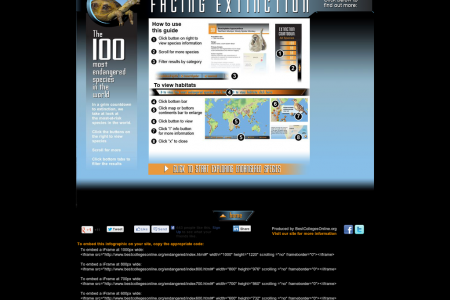
Unique Island Animals
UNIQUE ISLAND ANIMALS MANX CAT ISLE OF MAN A natural genetic mutation led to the shortened or missing tails of the cats that live on the Isle of Man. Manx cats are believed to be great hunters, often being favoured as farm cats and ship's cats in the past. GIANT TORTOISE ALDABRA ATOLL (SEYCHELLES) + GALAPAGOS ISLANDS (ECUADOR) The giant tortoise can grow to be 1.3 metres long and can weigh as much as 300kg - they are also among the longest-living animals in the world, with an average lifespan of over 100 years old. PIGS BIG MAJOR CAY Pigs may not seem like the most amazing creatures, however, the pigs of Big Major Cay swim out to great boats arriving at the island, often putting on the show in exchange for food! CRABS CHRISTMAS ISLAND Over 40 million crabs are believed to take residence on Christmas Island, where they have no natural predators. They are so vast in number that special road crossings have been set up for the species! LEMUR MADAGASCAR Arriving on the island by floating on rafts of vegetation around 62 million years ago, lemurs have evolved to withstand its severe seasonal environments. Lemur subspecies can range from only 30 grams to 9kg in weight. FORMOSAN ROCK MACAQUE TAIWAN This monkey is endemic to Taiwan and the only native primates living in Taiwan besides humans - it has specialised pouch-like cheeks which allow it to hoard food in its mouth. JAVAN RHINOCEROS JAVA (INDONESIA) Once one of the most widespread of the Asian rhinoceroses, the Javan Rhino is now considered one of the most endangered species on the planet and now resides only on the island of Java. SINARAPAN PHILIPPINES These tiny fish are only found around the Philippines and are considered a local delicacy. They are the smallest fish eaten as food, as recognised by the Guinness Book of World Records! TOKOEKA KIWI NEW ZEALAND This bird is the national symbol of New Zealand and displays monogamous behaviour once a mate has been found. The nostrils on the end of its long, slender bill gives them a keen sense of smell, which they utilize to find food. WILSON'S BIRD OF PARADISE WAIGEO & BATANTA ISLANDS This extraordinary looking bird has bare blue skin on the crown of its head that is so bright it is visible, even at night. The colourful bird lives on a diet consisting of mainly fruits and small insects. BROOKESIA MICRA NOSY HARA, MADAGASCAR This tiny chameleon is the smallest known at less than 30mm in length. It is thought this may be due to insular dwarfism - the reduction in size of large animals over a number of generations when limited to a small environment. THORNY DEVIL LIZARD AUSTRALIA The thorny devil lizard, also known as the thorny dragon, possesses a false head on the back of its neck, which is presented to potential predators. This creature also has the unusual ability to absorb water from any part of its body! PINK LAND IGUANA ISABELA ISLAND, GALAPAGOS ISLANDS Believed to be fewer than 100 individuals alive today, this uniquely coloured land iguana can only be found on the Volcan Wolf region on Isabela Island - part of the Galapagos archipelago. SAINT HELENA PLOVER ST. HELENA Known as the wirebird' due to its long, thin legs - the plover is now the only remaining endemic vertebrate on the South Atlantic island of St. Helena. GALAPAGOS PENGUIN GALAPAGOS ISLANDS The only penguin that lives north of the equator in the wild, there are fewer than 1000 breeding pairs - standing at around 19 inches tall and weighing about 2.5kg they are the second smallest penguin species. SUMATRAN TIGER SUMATRA Thought to be fewer than 50 remaining, the Sumatran tiger, smaller than other species, are in danger from forest loss and illegal trade. They were deemed distinct from mainland tigers after mitochondrial gene analysis. TARSIER ISLANDS OF SOUTH EAST ASIA The large eyes of the tarsier are as big as their entire brain and, along with the long hind limbs and fingers, give it a distinct look. It is in fact the elongated tarsus bones of the feet by which the animal is named! TASMANIAN DEVIL TASMANIA Familiar to many due to the Looney Toons character Taz - the Tasmanian Devil is the largest carnivorous marsupial in the world and found only on the Australian island state of Tasmania. TREE LOBSTER LORD HOWE ISLAND GROUP This stick insect species can measure up to 6 inches in length! Believed extinct in 1920, they were rediscovered in 2001 with a population of just 24 - thus being referred to as 'the rarest insect in the world'. PLATYPUS EASTERN AUSTRALIA The duck-billed platypus is one of only 5 mammals that lay eggs rather than giving birth as well as being one of the only mammals to hunt their prey via electroreception - detecting electric fields generated by muscle contractions. HISPANIOLAN SOLENODON HISPANIOLA This small mammal lives on Hispaniola, an island shared by Haiti and the Dominican Republic. It is one of the only venomous mammals, which flows in saliva secreted through a narrow groove in the second lower incisor. SOURCES + REFERENCES brightside.me en.wikipedia.org mnn.com discovermagazine.com sainthelenaisland.info Visit IOM doc.govt.nz shutterstock.co.uk www.visitiom.co.uk REPUR
Unique Island Animals
Source
http://visit...d-animals/Category
AnimalsGet a Quote











